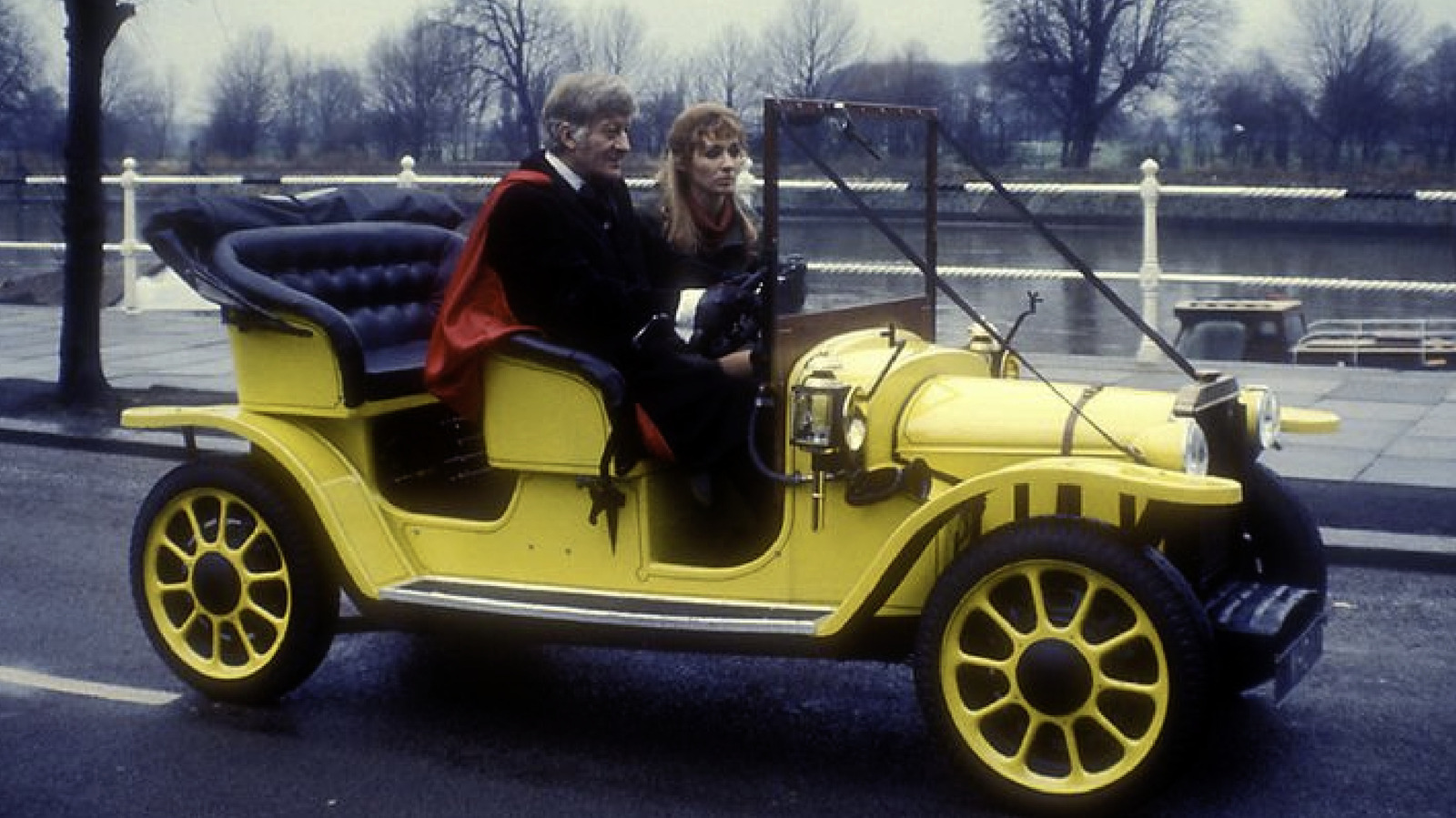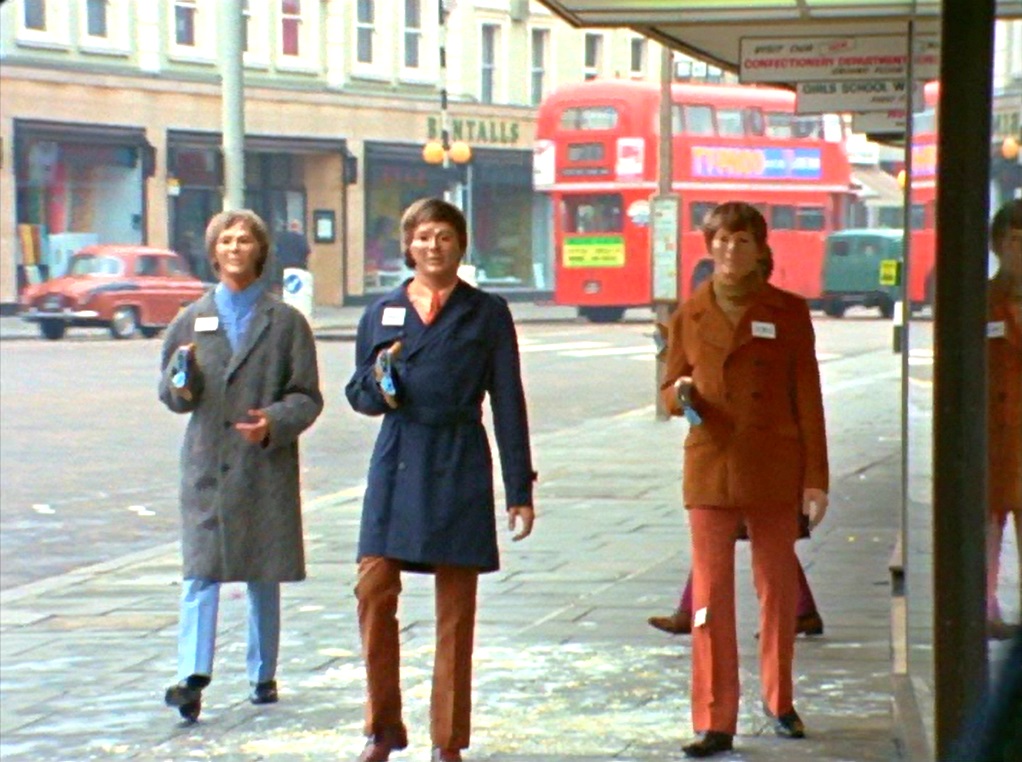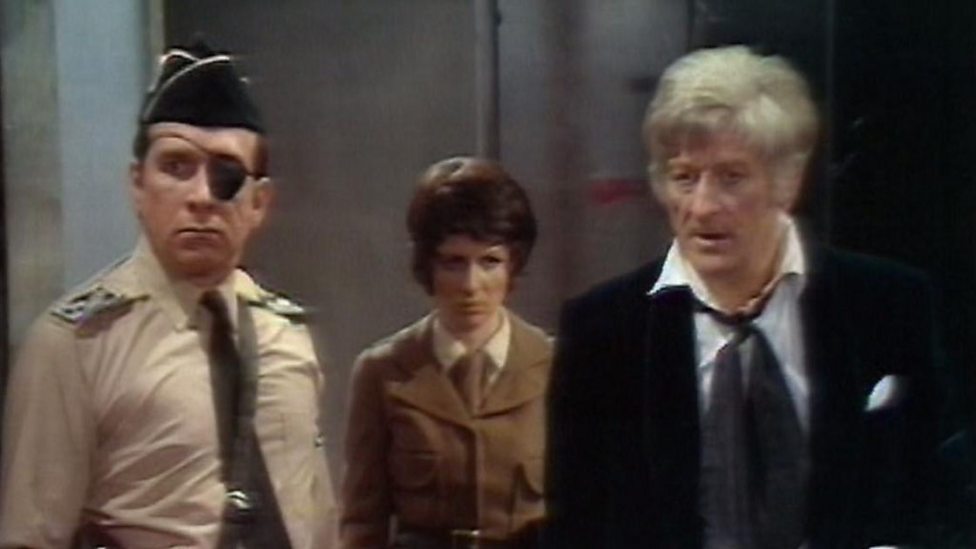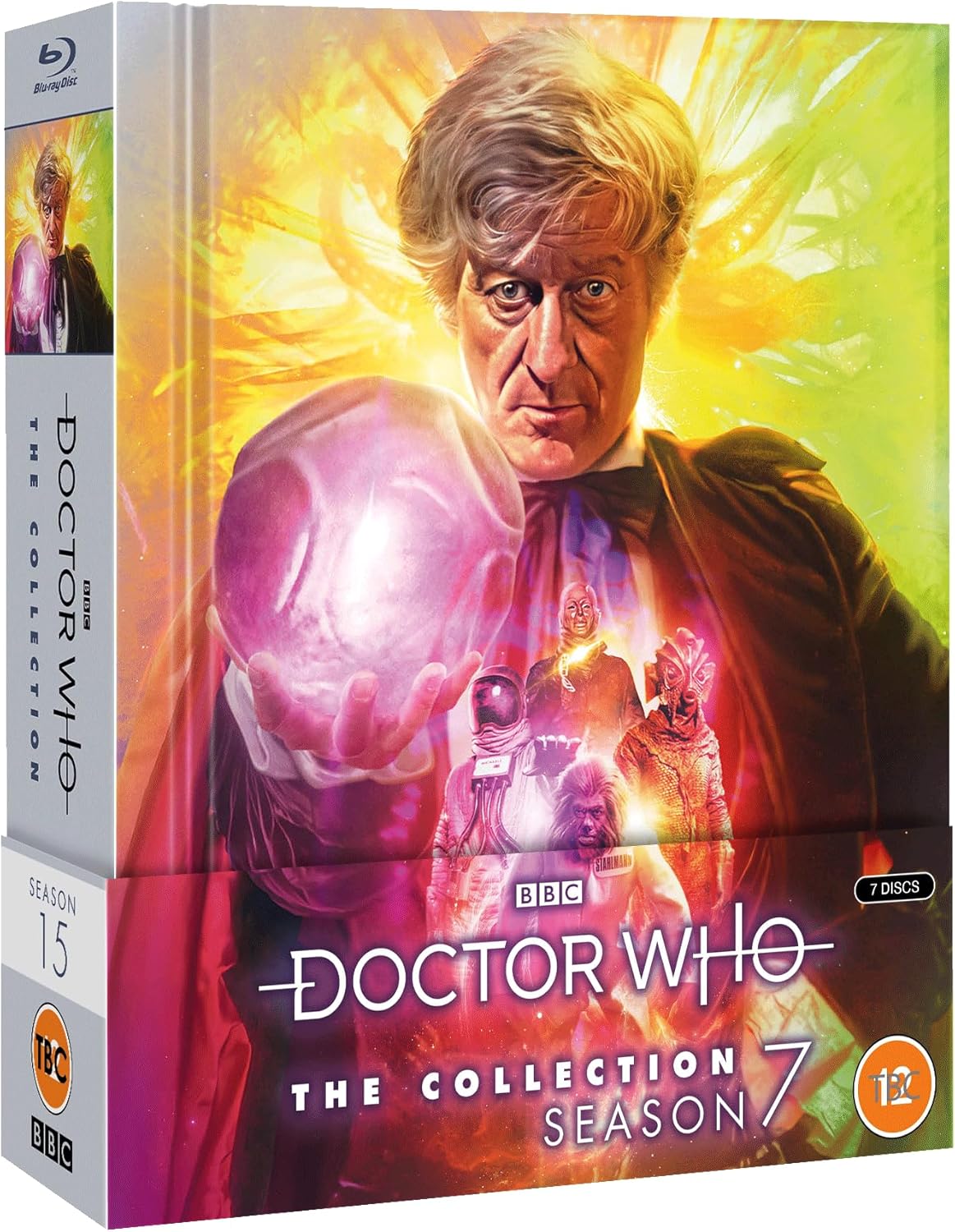Doctor Who Season 7 came at a time of great change for the programme. With no TARDIS and some of the longest, darkest stories in the series’ history, there really is nothing quite like it.
It may seem like madness in retrospect, but in 1969 Doctor Who was fighting for its life. The viewing figures were at an all-time low, and Patrick Troughton had left the programme. Moreover, the BBC no longer had the full rights to the Daleks (the series’ most popular villain) and there was a real sense that a new show was needed to fill the gap that Doctor Who would leave behind when it was pulled. Indeed, the script editor Terrance Dicks was even tasked with coming up with an idea for an alternative programme.
It’s remarkable, then, that Doctor Who Season 7 was made at all. The reality was, the BBC couldn’t come up with a series to replace it, and so it made a compromise; it would keep Doctor Who on the air, but make it as inexpensively as possible. The BBC reasoned that, if it filmed Doctor Who Season 7 on the streets of London and swapped out space stations for sitting rooms, it could save a huge amount of money.
Thus, plans were put in place to have the Doctor exiled to Earth, with all knowledge of how to pilot the TARDIS taken from him. And this is one of the first things that makes Doctor Who Season 7 so unique; the entirety of the season is set on contemporary Earth, with zero trips in the famous blue box. (Well, apart from an unexpected visit to a parallel world, but we’ll get to that.)

To add some ballast, the production team had the canny idea of surrounding the Doctor with some familiar faces from UNIT, the United Nations Intelligence Taskforce. This military outfit had made its debut in Season 6 with ‘The Invasion,’ led by the intrepid Brigadier Lethbridge-Stewart (who had made his debut the previous year in ‘The Web of Fear’) assisted by the ever-popular Sergeant Benton, among others. These characters helped to form the new regular cast for Doctor Who Season 7, with the Time Lord effectively becoming a UNIT employee and helping them in their fight against alien threats.
That is not to say that Doctor Who Season 7 lacked a traditional companion, though. The production team devised a character to assist the Time Lord in the UNIT laboratory, and this was the scientist Liz Shaw – possibly one of the cleverest and most qualified of all the Doctor Who companions. According to the Brigadier, she has degrees in medicine, physics and “a dozen other subjects,” and she is also a qualified doctor. Liz Shaw broke the mould of what a Doctor Who companion could be, and even to this day there has never quite been a companion like Liz Shaw, so wonderfully portrayed by the late Caroline John.
The stage was set, therefore, for a Doctor Who season like any other – and not always in a good way. Because, before Doctor Who Season 7 had even gotten off the ground, it was hit with strike action that prevented the first serial ‘Spearhead from Space’ from going into the studio. Alas, this was a problem that would continue to plague the programme throughout the 70s, hindering and even cancelling the production of many a Doctor Who adventure, most famously the six-part ‘Shada‘ in 1979.
However, not to be defeated, the producer Derrick Sherwin decided to shoot the entire story on film and capture all the scenes on location. This was a bold and costly move, but the result was something that looked like a Doctor Who movie, and it lent the show a polished, big-budget appearance. ‘Spearhead from Space’ still stands up to this day, and even became the first classic Doctor Who story to be released on Blu-ray.
Moreover, the influence of this classic serial from Doctor Who Season 7 extended far beyond its initial transmission, as it also introduced the Autons – evil waxwork dummies that terrorised the streets of London. These monsters were the brainchild of Doctor Who veteran Robert Holmes, and were later used as the main baddie when Doctor Who was relaunched in 2005.

‘Spearhead from Space’ also benefitted from the fact that it was four episodes long, which is a good length for a Doctor Who adventure. However, it was the only one of its kind in Doctor Who Season 7, as the BBC had also decided to produce longer serials as part of its cost-cutting measures. Thus, every other story in Doctor Who Season 7 ran to an unprecedented seven episodes. Stories of this length were a rarity in the Whoniverse, and to this day Doctor Who Season 7 is the only season to comprise of any seven-part stories.
Moreover, the tone of these stories is distinctly adult and gritty; there is little camp charm to be found in Doctor Who Season 7, and the show (for better or for worse) takes itself very seriously.
This tone peaked with the final story of Doctor Who Season 7 ‘Inferno,’ which is all about a mad scientist trying to penetrate the Earth’s crust with a massive drill. In the adventure, the Doctor is sent to a parallel world and sees the effect that the scientist’s drilling has on the planet, and in the parallel reality the world does actually come to an end. There is a particularly harrowing cliffhanger at the end of part six where the Doctor’s parallel friends are wiped out by a lava flow, and he is powerless to stop it.

In short, ‘Inferno’ is perhaps one of the bleakest Doctor Who stories ever transmitted, but it remains a fan favourite. Remarkably for a seven-parter, it treads little water and remains gripping to its end.
Change, however, was on the horizon. There is no doubt that the new Doctor and the new format (including the fact that the series was now in colour) had proved popular with viewers, with figures rising to over 9 million during ‘The Ambassadors of Death,’ but the incoming producer Barry Letts was unhappy with the BBC’s plans to have every adventure set on Earth, and didn’t think the longer serials worked. When Doctor Who returned seven months later, things looked very different indeed.
That is not to say that there is anything ‘wrong’ with Doctor Who Season 7. It is much-loved by huge swathes of Doctor Who fans, and produced some truly iconic moments and monsters. But there is no denying that it was distinctly different from anything that had come before, and even to this day there has never quite been a series like Doctor Who Season 7.
What do you love most about this classic Doctor Who series? And which is your favourite story? Let us know in the comments below.




If memory serves, Season 26 is the only other season to be set completely on Earth.
I love this season with the introduction of Jon Pertwee as the Doctor, it’s a shame that we only had Liz Shaw for this season but they’re four very enjoyable stories to watch, my favourite being The Ambassadors of Death, which interestingly has a bit of a Quatermass Experiment element to it with the rocket being sent up and the original pilots not returning. That said, Spearhead from Space has a touch of the second Quatermass instalment to it, but no bad thing to either of them. I have to say though, the first time I watched Inferno I was literally on the edge of my seat throughout.
I absolutely adore season 7. Seasons 7, 13 and 26 are my all time fave seasons. I think Spearhead From Space is the best debut of a new doctor from the classic era, and Inferno was the only story that gave me (and continues to give me) nightmares. I love also how the majority of the threats are actually home-grown monsters with only one story seeing the central menace coming from outer space. Liz Shaw is like a prototype Dana Scully and the whole tone of the series is more adult in a way that doesn’t return until Season 13. All of this said, it really does feel ready for the brightness that returns in Season 8 and nothing is lost in terms of the quality of story and characters. I love Pertwee’s entire run, and they’re always amongst the stories and seasons I find myself returning to most frequently.
I think the Brig was introduced in Web of Fear, if I may correct you? The Invasion was considered a test run to see if it could be done – 7 parter entirely set on Earth. Sergeant Benton himself – John Levene – even played a Cyberman in that show.
Season 7 also introduced out of order filming . With sets being struck and reassembled they would get damaged between episodes. Barry Letts introduced per-set filming for each recording block rather than per-episode. This gave the benefit of much larger sets later on in the season .
Great article and a reflection on the grittier tone of the stories, loved by many!
Quite right! I’ve amended 🙂 And that’s a good point about ‘out of order’ filming. It really was the beginning of a brand new era for the show, in every sense.